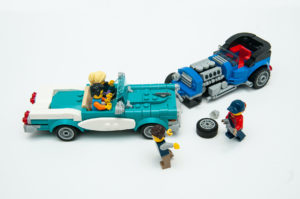Is Your Valuable Items Insurance Coverage Enough?
Valuable items insurance coverage is an often-misunderstood type of insurance coverage that most people need to purchase.
The reason is simple. Your standard home insurance policy offers broad, but very limited, coverage when it comes to certain items. This means that items that may have significant value to you (personally and monetarily) may not be covered by your home insurance policy.
For some, they don’t realize this until it’s too late, and their items are gone and unable to be replaced. Read on to learn what you’re covered for and how to make sure your most prized possessions are safe.
What Does a Standard Policy Cover?
To understand why valuable items insurance is so important, it’s a good idea to first understand the types of limitations standard policies have for coverage on valuable items. Examples of limitations are typically placed on the following:
- Jewelry
- Furs
- Firearms
- Electronics
- Antiques
- Works of art
- Collections
- Silverware
For example, depending on your policy, you might only have a maximum of $1,000 coverage for the theft of jewelry or furs or $2,000 maximum coverage for your firearms (the entire collection, not each firearm).
The good news is that valuable items insurance provides options for people who have highly prized items or valuable collections that require additional coverage beyond those offered by standard plans.
What Types of Items Benefit from Valuable Items Insurance Coverage?
If you look around your home, you’re likely to find one or more items that perhaps should have additional insurance protection in the form of valuable items coverage. Think of all the money you’ve invested in items, and then consider their value to you aside from the dollar signs.
Items you might want to consider additional coverage for include, but certainly are not limited to, the following:
- Antiques
- Cameras
- Collections (Stamps, Dolls, Comic Books, Coins Rare Books, Baseball Cards, Memorabilia, etc.)
- Computers
- Fine Art
- Furs
- Garden Tractors
- Golf Clubs and other Equipment
- Guns
- Jewelry
- Pedigreed Puppies and Dogs
- Sound Equipment
- Sports Equipment (camping, fishing, archery, hockey, etc.)
- Television/Home Theater Equipment
- Video Equipment
- Wedding/Engagement Rings
- Wine Collections
If there is any doubt as to whether an item or type of collection should be further protected with valuable items insurance, it’s best to speak to your insurance provider.
Checklist for Securing Valuable Items Insurance
Securing valuable items insurance coverage can be overwhelming at first. If you’re not sure where to start, take a look at our checklist below.
Dissect Your Insurance Policy
Even if you’ve done so before, spend some time combing through your homeowners insurance policy. Focus on coverage and item limitations. If you have any questions (and the way policies are sometimes worded, you probably will), speak to your insurance broker.
You may be under the impression your items have been covered for the duration of your ownership, only to be surprised in finding only a certain percentage or none at all is covered. If this is the case, consider yourself lucky you haven’t had to make a claim. But now is the time to secure valuable items insurance coverage.
Complete a Home Inventory
Though it can be time consuming, taking a home inventory is simple, especially thanks to today’s technology. Start with an easy spot in your home and then get a feel for what works for you. Maybe you want to use an app or just write everything down and input the information into a spreadsheet later. Either way, track everything.
You’ll want to include basic information, like makes, models, colors, or other differentiating details. Record serial numbers if applicable. Make note of especially valuable items and discuss these individually with your insurance broker. Make sure you take pictures as required for your inventory and store these along with a hard copy somewhere offsite, so it won’t be damaged during a disaster.
Have Items Appraised
You might not know the value of an item offhand or your insurance broker might encourage you to have an item appraised so you know you have adequate coverage. If you live near an auction house, see if they offer free appraisal days if you have an item that you’re not sure if its value is worth the cost of appraisal. But for insurance purposes, you’ll want to make sure you have an item appraised by a licensed appraiser who can provide the proper paperwork.
Know Your Risks
Just like some homes are more likely to be flooded or struck by a tornado, certain items are more at risk than others based on your location. Do you live in a high crime area? Are break-ins more frequent than the town next to yours? While this may or may not have an effect on your policy or deductible, knowing your personal risks could help you decide on the best route to protecting your most prized valuables.
Take Proper Precautions
While the monetary value of certain items can be protected by insurance, the personal value can never be replaced. It might be wise to invest in a safe for your great-grandma’s diamond necklace or look into additional security features for your garage storing your collectible car.
In some cases, it may even make more sense to store your items off-site, like at a storage unit or in a safety deposit box. But if you prefer to keep your valuables nearby at all times, making sure they have a safe place to rest is best. Consider display cases for antiques, cushioned jewelry holders for rings, or proper storage away from the elements for collections.
Reevaluate as Needed
The first time you do inventory of your home will be the most difficult. The good news is that once you get it over with, you’ll be able to conduct yearly inventory updates quickly and easily. Make sure you conduct these updates but also inform your insurance broker of any major changes.
If you’ve sold a certain valuable, you could be paying for coverage you no longer need. But if you’ve added more to your list of valuables or the value of an item has drastically increased, more coverage could be necessary. It can be impossible to answer the question of whether you have enough coverage or not on your own, so always direct any concerns to your insurance provider.
Types of Valuable Items Insurance
There are essentially two different types of valuable items coverage policies you can purchase. You can buy individual policies for your valuable items. This allows you to get the highest value coverage for individual items and is a wise plan if you have a few exceptionally high value pieces in your home.
However, if you have a collection or want broader terms to accommodate items in various categories such as jewelry, art, sports equipment, electronics, and collectibles, you might want a blanket plan that provides wider coverage.
If you choose individual floater policies for each valuable item, you will pay more for the better coverage, but you will also need to have the items for coverage itemized and appraised.
Which Is Better?
It really depends on your situation and the value of items in your home. Whether or not you purchase the individual policies it’s a good idea to know the worth or value of the items in your home, available through appraisals, and keep an itemized list of the valuable items.
Before you make decisions about the best choice for your situation it’s important to gain a realistic understanding of the value of your home’s contents, which items have specifically higher values, and exactly how valuable those items are. You’ll be surprised by the items that gain or lose value over the period of a few years.
If you have questions about the value of your collections or whether or not individual policies for high value items or broader coverage for a group of items is a better fit, make sure you discuss them with your insurance agent today.



